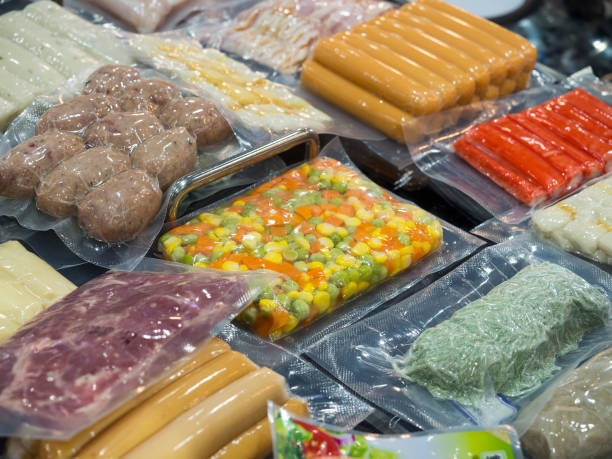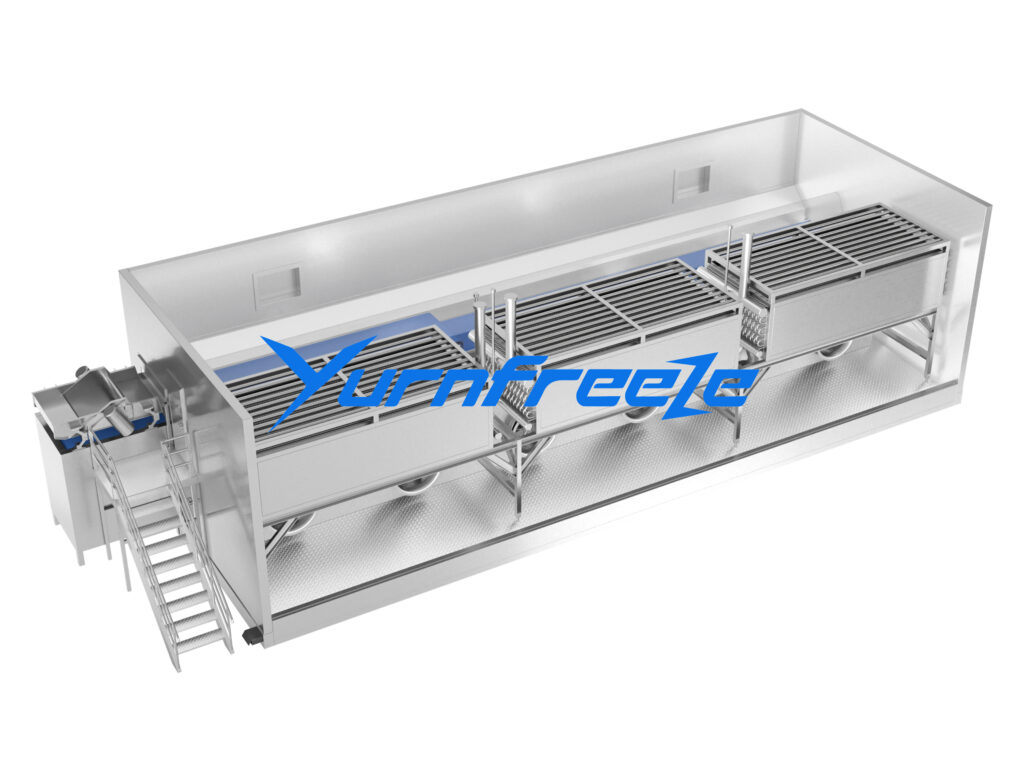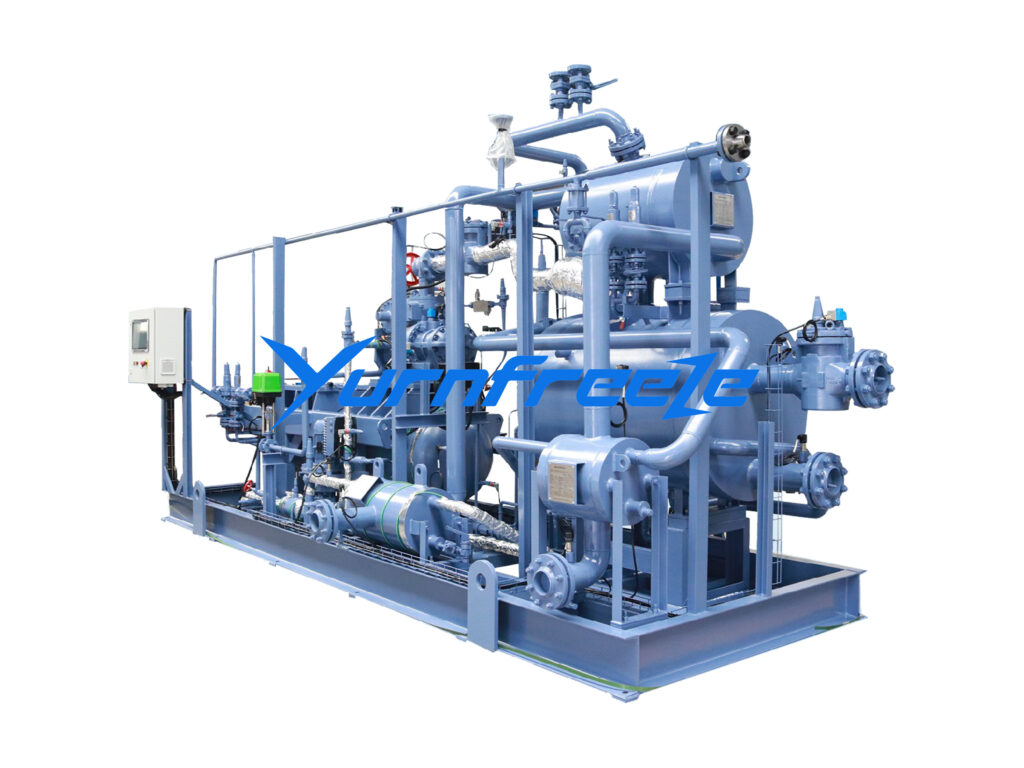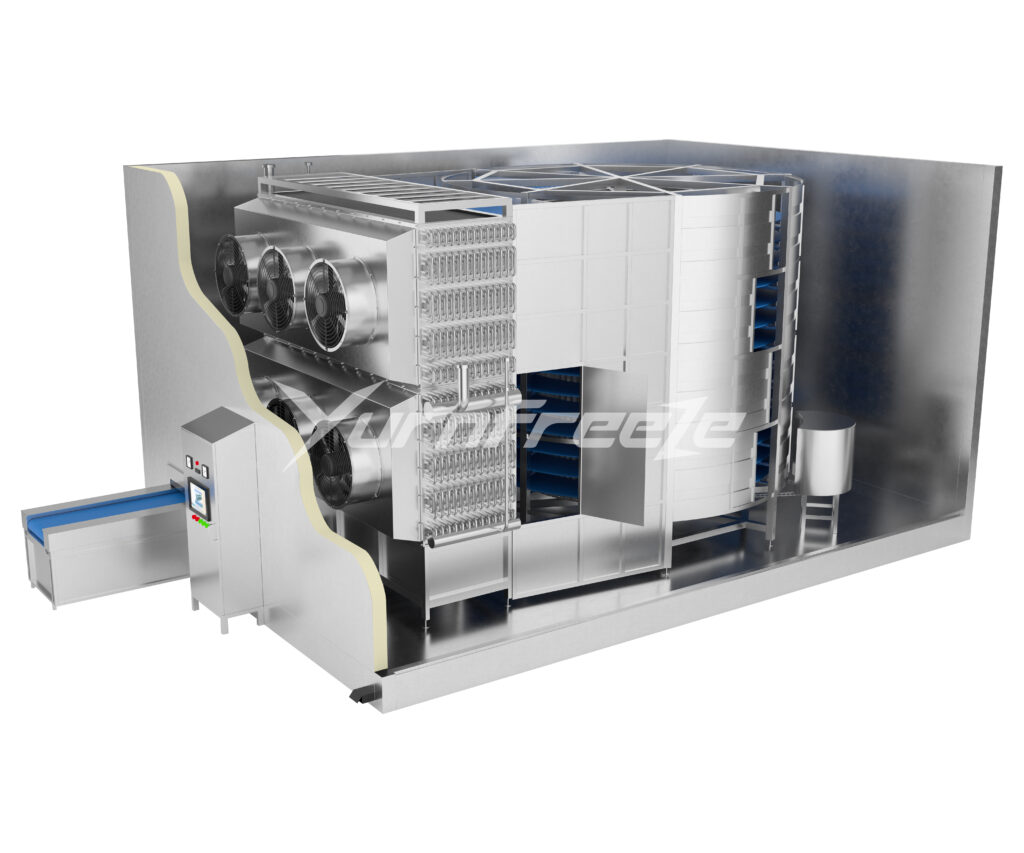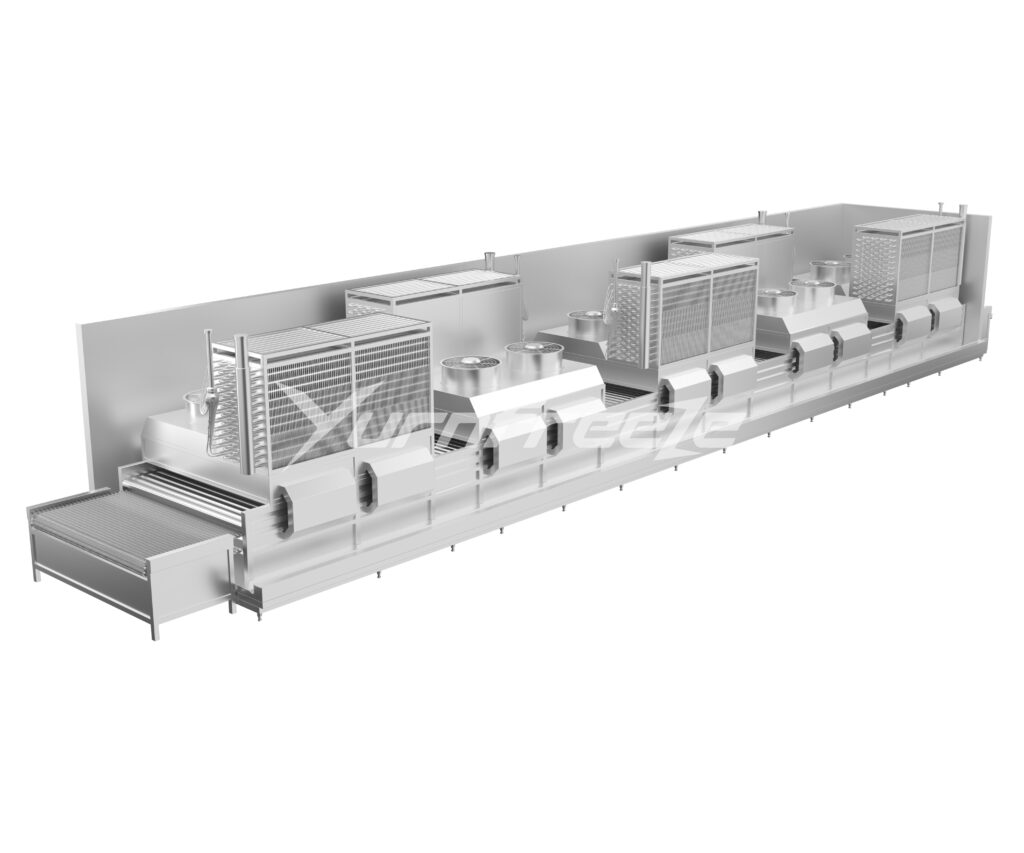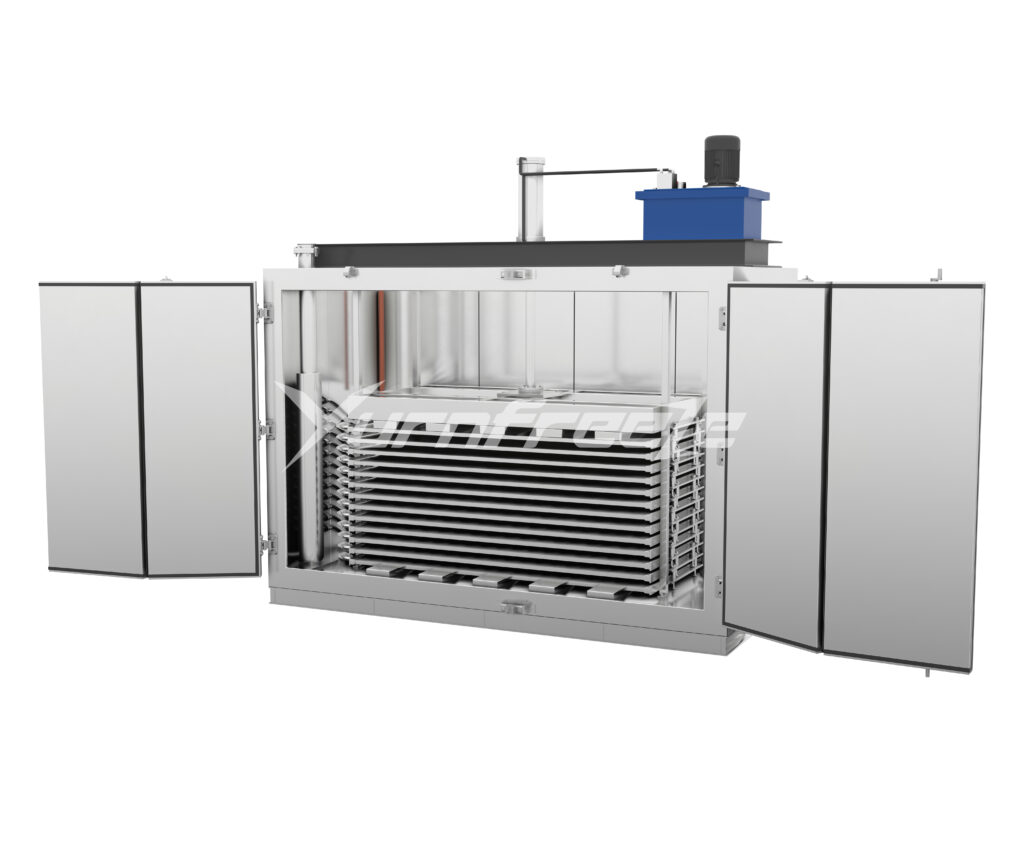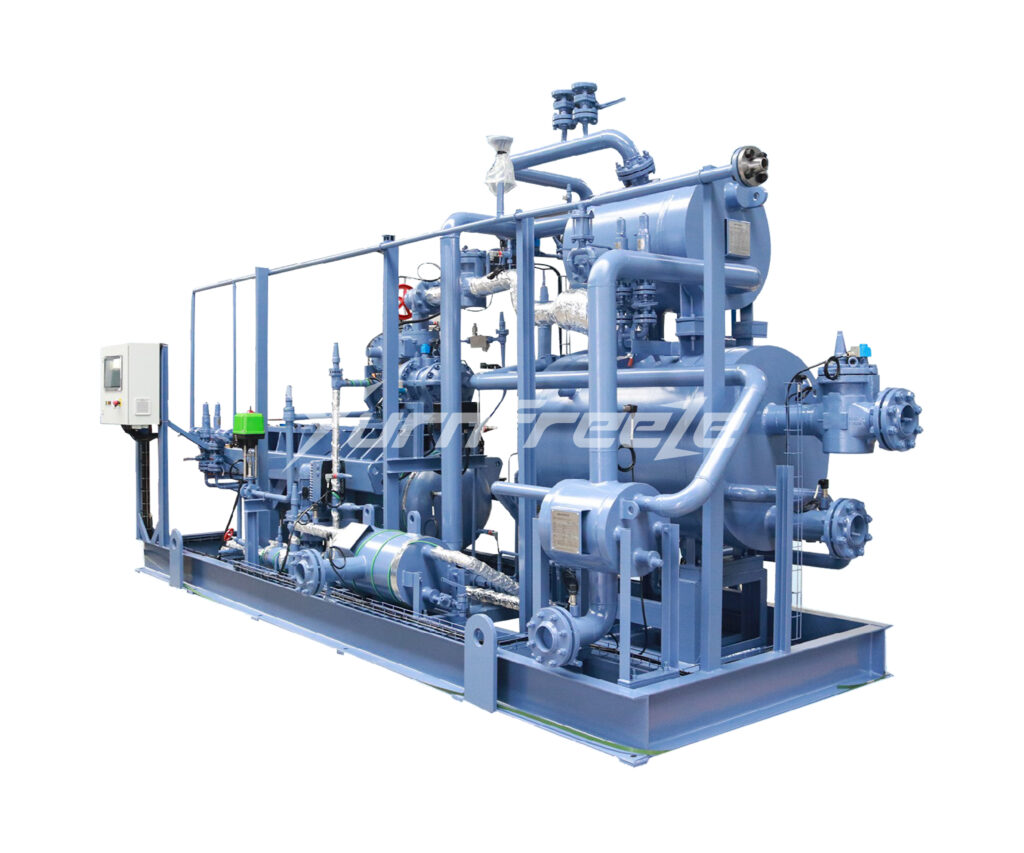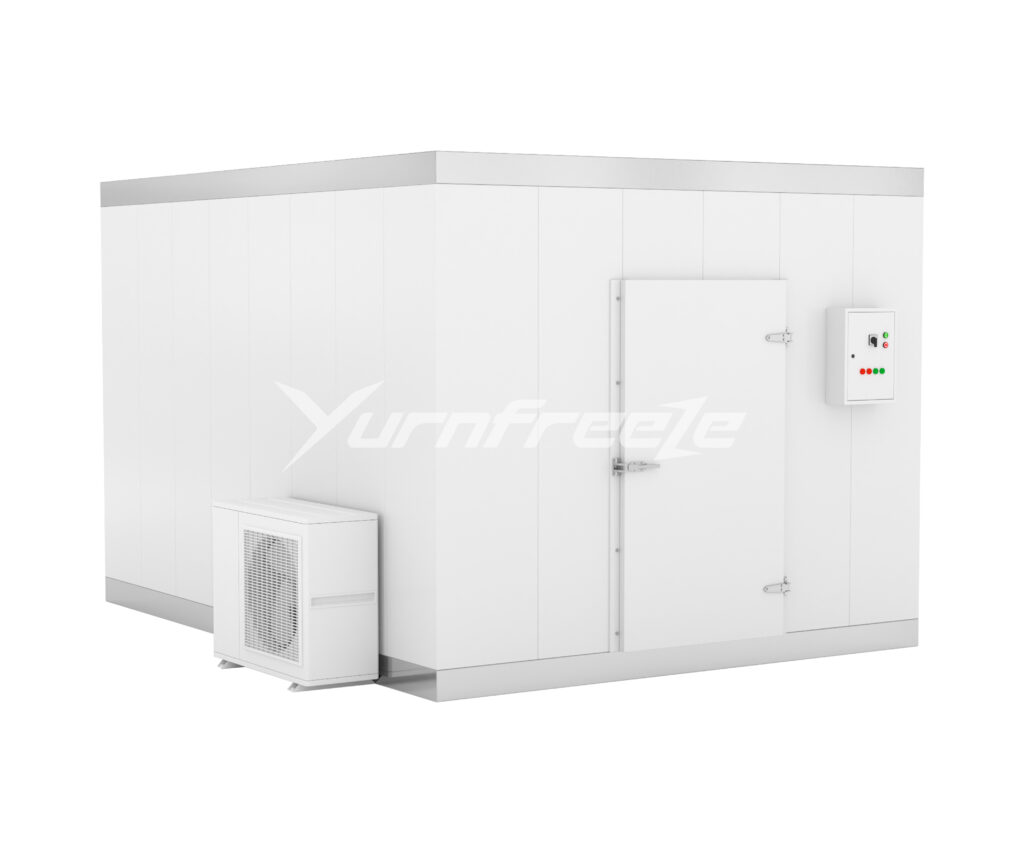Cooling and freezing technology is a heat exchange process based on thermodynamics that uses low-temperature media to reduce the temperature of food materials. It is one of the important technologies of modern food engineering and one of the core technologies used in the pre-prepared staple food and dish production and logistics distribution of central kitchens. The main purposes of cooling or freezing are: to reduce the temperature of materials; to transfer the heat of biochemical reactions; to prevent the reproduction of microorganisms; to inhibit the activity and respiration of enzymes, and to provide suitable quality and temperature conditions for subsequent processing. Among them, cooling technology is to reduce the temperature of food to above or below the freezing point without freezing, but to use the low temperature environment to reduce the temperature of food to achieve the purpose of preservation. Freezing technology is to reduce the temperature of food to different degrees below the freezing point, generally freezing it quickly at 30%C, and then transferring it to -18~-20C for frozen storage. Freezing technology has a greater impact on the quality of frozen storage and its storage resistance. Food freezing technology requires that its equipment lowers the food temperature to the expected freezing temperature below the freezing point (i.e., freezing point) in the shortest possible time, inhibits microbial activity and greatly slows down the biochemical changes of food, so that all or most of the water contained in the food forms small ice crystals as the heat inside the food dissipates, thereby reducing the liquid water necessary for life activities and biochemical changes, and does not destroy the cell structure, thereby ensuring the stability of the food during the freezing process.
Heat is generally transferred from a high-temperature object to a low-temperature object, so the temperature of the cooling medium must be lower than the temperature of the food material. Cooling and freezing is the process of transferring the heat of the cooled food material to the surrounding medium (water or air), so that the internal temperature of the food material is reduced and is lower than the temperature of the surrounding medium to a certain extent, and this temperature condition can be maintained.
Cooling and freezing technology is widely used in the food processing industry. In summary, it is mainly used in the following four areas:
First, the processing of frozen foods and quick-frozen products;
Second, the storage of food raw materials or semi-finished products;
Third, special means of food processing, such as beef and mutton can be cut into thin slices under frozen conditions;
Fourth, the application in central kitchens, including the storage of raw materials, cold processing and cold distribution.
Common cooling technologies
- Cold air cooling technology
- Technical introduction
Cold air cooling technology is a method of using low-temperature cold air as a medium to reduce the temperature of food materials. Its principle is to use low-temperature airflow in the form of jet impact to achieve forced heat exchange in the target area. Its core technology is to use the forced flow of low-temperature gas to improve the efficiency of heat exchange, give full play to the heat exchange potential of the cooling medium, so as to obtain the best forced heat exchange effect and improve the heat exchange condition of the target area to a new level. Due to the easy flow of cold air, cold air cooling has the advantages of easy control of the cooling process and continuous operation, but its disadvantage is that the food loses water or even dries due to the evaporation of water during the cooling process. The controllable parameters of cold air cooling include air temperature, air flow rate and relative humidity.
For cold air cooling, air is not a very ideal cooling medium because of its small specific heat. However, from the basic heat transfer equation [Q= h4(T-T) ], it can be seen that increasing the interface convection heat transfer coefficient, increasing the heat exchange area or temperature difference can improve the cooling effect. Although the convective heat transfer coefficient of cold air is smaller than that of cold water, the gas jet increases the dynamic heat exchange area and enhances the heat exchange efficiency: the cooling purpose can be achieved as long as the gas temperature is lowered.
- Scope of application
The source of cold air is cheap purified air. Therefore, the cooling method is easy to use and has a wide range of applications. It can be used to cool meat, poultry, eggs, prepared foods, and foods that cannot be cooled with water. The main forms of cold air cooling are strong wind cooling and pressure difference cooling.
The working principle of the strong wind cooler is to first inject compressed air at room temperature into the bottom chamber of the strong wind cooler, and then enter the capillary heat conduction pipe upward. During this process, some large particles of dust fall into the ash hopper under the action of gravity; when the air passes through the capillary heat conduction pipe, the axial flow fan blows the capillary heat conduction pipe with strong air to take away a large amount of heat, thereby achieving a certain cooling effect; after the air is cooled once, it is collected at the top of the cooler and circulated downward from another chamber through the elbow. When passing through the capillary heat conduction pipe in the chamber, it is cooled again by the strong blowing of the axial flow fan; the cooling gas that reaches the required temperature passes through the bottom outlet and is discharged to the target area.
Differential pressure cooling is to place the cooled food in an environment with a pressure difference caused by the fan exhaust, so that the food material and the air can exchange heat, thereby achieving the purpose of reducing the temperature of the food material. Most foods can be cooled by differential pressure, but there are problems such as water loss and wilting of food materials during the cooling process. At present, the most widely used cold air cooling device in food processing is the air cooler. Its working principle is: when the fan is running, a negative pressure will be formed in the cavity, so that the air outside the machine flows through the porous wet curtain surface, so that the dry bulb temperature of the air inside the machine is reduced to close to the wet bulb temperature of the air outside the machine, that is, the dry bulb temperature at the outlet of the air cooler is 5~129C lower than the outdoor dry bulb temperature (up to 15C in dry and hot areas). The drier and hotter the air, the greater the temperature difference and the better the cooling effect. Since the air is always introduced from the outside to the indoor, the circulating water pump is used to continuously pump out the water in the water tank and spray it evenly on the evaporative filter layer through the water distribution system. The outdoor normal temperature air fully exchanges heat with the water through the evaporative heat exchanger (wet curtain net). The cool and clean air cooled by the water evaporation and heat absorption is sent to the room by the low-noise fan under pressure. The cooling range can reach 5-120 degrees lower than the outside. Figure 8-1 and Figure 8-2 are schematic diagrams of the principles of several cold air cooling devices.
- Ice water cooling technology
Ice water cooling is a method of cooling food to a specified temperature by using low-temperature water as a medium. Compared with air cooling, ice water cooling has many advantages: it can prevent the material from losing water or drying, the cooling speed is faster, and less space is required; for some products, the quality of the product is not affected after cooling. Ice water cooling is usually used for cooling livestock, poultry, aquatic products, and certain vegetables and fruits. Microorganisms in cooling water can be controlled by adding oxygen-containing compounds or acidic electrolyzed water. Chiller is a commonly used water cooling equipment that can provide cooling water with constant temperature, constant flow and constant pressure. Its working principle is to first fill a certain amount of water into the water tank in the cooling machine, cool the water through the refrigeration system, and then send the low-temperature cooled water to the equipment to be cooled through a water pump. The cooling water takes away the heat and the temperature rises and then flows back to the water tank to achieve the effect of re-cooling. The temperature of the cooling water can be automatically adjusted according to requirements, and long-term use can save water. The operation of the chiller system is completed through the cooperation of three related systems, namely the refrigerant circulation system, the water circulation system, and the electrical automatic control system.
The refrigerant circulation system includes compressor, condenser, liquid receiver, filter drier, thermal expansion valve, evaporator and refrigerant, etc. The compressor is the core component of the entire refrigeration system and the power source for refrigerant compression. Its function is to convert the input electrical energy into mechanical energy and compress the refrigerant. In this process, the condenser plays the role of outputting heat energy and condensing the refrigerant. According to the cooling medium and cooling method, the condenser can be divided into three categories: water-cooled condenser, air-cooled condenser and evaporative condenser. After the high-pressure superheated steam discharged from the refrigeration compressor enters the condenser, all the heat absorbed in the working process is transferred to the surrounding medium (water or air) and taken away; the refrigerant high-pressure superheated steam is condensed into liquid again. The liquid receiver is installed after the condenser and is directly connected to the discharge pipe of the condenser. In order to make full use of the cooling area of the condenser, the refrigerant should be able to flow into the liquid receiver unimpeded. At the same time, since the required amount of refrigerant changes with the heat load of the evaporator, the liquid receiver can also play the role of adjusting and storing refrigerant. If it is a small refrigeration system, it is often not equipped with a liquid receiver, but a condenser is used to adjust and store refrigerant. The dry filter can remove the trace moisture contained in the newly added refrigerant and lubricating oil in the refrigeration cycle and the moisture brought by the air entering the system during the maintenance of the system to prevent the moisture in the system from not being completely removed. When the refrigerant passes through the throttle valve, the pressure and temperature drop will cause the moisture to freeze into ice, blocking the channel and affecting the normal operation of the refrigeration device. The thermal expansion valve is both a flow regulating valve and a throttle valve in the refrigeration system. It is installed between the dry filter and the evaporator in the refrigeration equipment. Its main function is to throttle and reduce the pressure of the high-pressure and normal-temperature refrigerant liquid when it flows through the thermal expansion valve, and turn it into low-temperature and low-pressure refrigerant wet vapor to enter the evaporator, vaporize and absorb heat in the evaporator, and achieve the purpose of refrigeration and cooling. The evaporator is a heat exchange device that relies on the evaporation of the refrigerant liquid to absorb the heat of the cooled medium. The function in the refrigeration system is to absorb heat. In order to ensure that the evaporation process can be carried out stably and persistently, the evaporated gas must be continuously pumped away by the refrigeration compressor to maintain a certain evaporation pressure. Chillers generally use difluoromethane monoxide (R2) or difluorodichloromethane (RI2) as the cooling agent in the refrigeration system. Its main function is to carry heat and absorb and release heat when the state changes. The water circulation system is a water pump that pumps water from the water tank to the equipment to be cooled. The cooling water takes away the heat and the temperature rises. It then returns to the cold water tank for cooling and then circulates to the equipment to be cooled. The electrical automatic control system consists of a power supply part and an automatic control part. The power supply part supplies power to the compressor, fan, water pump, etc. through a contactor. The automatic control part is composed of a thermostat, pressure protection, delay, relay, overload protection, etc. to achieve automatic start and stop, protection, etc. according to the water temperature.
Chillers are different from general water cooling equipment because they have a completely independent refrigeration system and are absolutely not affected by the air temperature and environment. The water temperature is automatically adjusted and controlled within the range of 5~30C, so the purpose of high-precision and high-efficiency temperature control can be achieved. The chiller is equipped with an independent water circulation system. The water in the chiller is recycled, which can save a lot of water. It can be widely used in food processing and storage. The use of this equipment in the central kitchen can save time, labor and water.
- Vacuum Cooling Technology
- Introduction to Vacuum Cooling Technology
The vacuum cooling method is to place the cooled food material in a vacuum or reduced pressure environment, and keep the ambient pressure lower than the pressure of water vapor on the surface of the food material during the cooling process, so as to promote the evaporation of water in the food material into the air. The evaporation of water requires a large amount of evaporation latent heat, thereby reducing the temperature of the food material. However, vacuum cooling can also cause dry loss of food materials. For example, for fruits and vegetables, the temperature drops by 5~6C, and the fruits and vegetables lose about 1% of water. Therefore, in actual operation, the cooled material is usually pre-moistened. The speed of vacuum pre-cooling depends on factors such as the specific surface area of the food material, the ease of water loss of the product, the air permeability of the packaging container, and the performance of the vacuum pump. Vacuum cooling is suitable for food materials with a large evaporation surface area that can be quickly cooled by water evaporation, such as leafy vegetables. For this type of food material, due to the fast evaporation rate and short cooling time, the water loss caused is not very large.
2: Advantages of vacuum cooling technology
The advantages of vacuum cooling technology are mainly reflected in the following aspects:
(1) Short cooling time. Vacuum cooling generally only takes 20 to 30 minutes, while ordinary cooling takes about 20 hours. In vacuum cooling, the cooling time required varies depending on the type of food. For example, asparagus and cauliflower require 30 minutes, while lettuce and sweet corn only require 20 minutes.
(2) Products can be kept fresh longer. Vacuum cooling technology is mostly used for pre-cooling of fruits and vegetables just harvested in the field. It can quickly absorb the field heat of vegetables and fruits, effectively prevent the pre-cooled materials from rotting and deteriorating, thereby better ensuring the quality of vegetables and fruits. Vacuum cooling technology is also used for cooling cooked food after hot cooking. After reaching the target temperature, it can be packaged or put into cold chain storage and transportation.
(3) Reduce food microbial contamination. Vacuum cooling is carried out in a closed environment, relatively isolated from the outside world, and vacuum cooling can quickly reduce the temperature of the cooled material, reducing the time it takes to pass through the temperature zone where microorganisms grow rapidly, thereby inhibiting microbial reproduction and reducing food microbial contamination.
(4) The quality of cooled food is good. The vacuum cooling process takes a short time, the internal structure of the product is not destroyed, and no local deformation occurs, maintaining the original shape, color and flavor.

